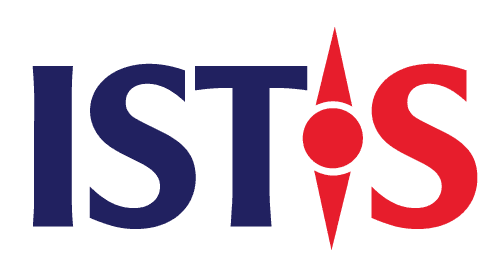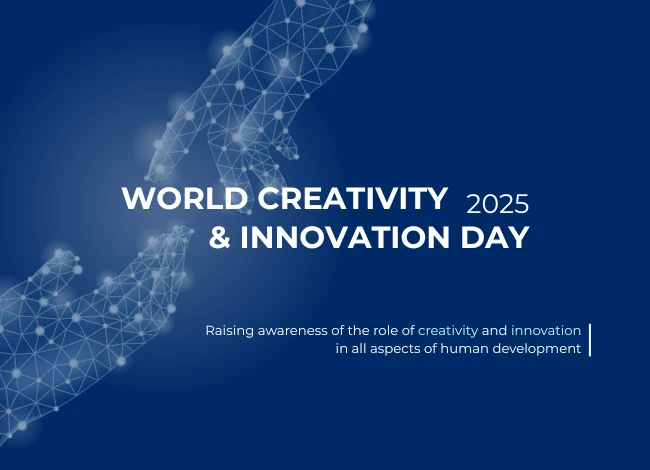What Drives Technology Development Today
Technology doesn’t evolve in a vacuum. Its development is closely tied to the pressures, ambitions, and needs of the world around it. Today, several major forces are accelerating technological progress at an unprecedented pace. One of the most visible is globalization. As markets become more interconnected, businesses and governments alike are driven to innovate rapidly—not only to stay ahead of competitors, but to meet increasingly complex consumer demands across diverse regions. The internet has enabled information to spread instantly, allowing great ideas to be adopted, adapted, or improved faster than ever.
Another key driver is the digital transformation of industries. Companies across all sectors—from healthcare to logistics—are reinventing their operations using digital tools and data. Cloud computing, mobile platforms, and artificial intelligence are no longer niche investments; they’ve become essentials for survival and growth. These technologies, in turn, demand continuous development to remain secure, scalable, and responsive to changing needs.
Consumer behavior also plays a major role. Today’s users expect more personalization, speed, and convenience than ever before. Technology developers are increasingly user-centric, focusing on frictionless experiences and real-time interactions. This constant pressure from end-users helps fuel cycles of continuous improvement and iteration.
At a broader level, policy and geopolitics shape technology development as well. Nations invest in strategic technologies like semiconductors, renewable energy, and cybersecurity to secure economic strength and digital sovereignty. Meanwhile, public funding for science and research institutions provides the foundation for many of today’s innovations.
Lastly, we can’t ignore the climate crisis and societal challenges that now influence innovation priorities. Technologies that address sustainability, equity, and public health are seeing a surge in interest, not just from governments but from investors and communities.
In short, technology development today is shaped by a powerful mix of economic competition, user expectation, systemic challenges, and global ambition. Understanding these forces helps us not only predict where technology is heading but also influence how it should evolve.
The Innovation Lifecycle
Behind every breakthrough technology is a journey—from concept to creation to adoption. This path, known as the innovation lifecycle, is rarely linear. It’s a complex, iterative process that blends creativity, strategy, testing, and market engagement. Understanding this lifecycle helps explain why some ideas flourish while others fade.
It all begins with discovery. Whether sparked by research, necessity, or pure curiosity, new ideas often emerge in academic labs, startups, or within R&D departments of established companies. At this stage, technologies are still unproven—concepts may exist only on paper or in prototype form. What matters most here is curiosity, freedom to experiment, and the right environment to fail and learn.
Next comes development. Turning an idea into a workable technology requires engineering skill, technical infrastructure, and funding. Developers must solve real-world problems, manage risk, and ensure scalability. This is where partnerships, incubators, and early-stage investments play crucial roles—providing the resources and guidance needed to bridge the infamous “valley of death” between research and viable product.
Commercialization follows. Even the most promising technologies can struggle here if they fail to find product–market fit. Teams must understand user needs, tailor their offerings, and design go-to-market strategies. Feedback loops from real customers drive iteration and refinement. Marketing, pricing, and distribution strategies start to shape the technology’s success in the real world.
Then comes adoption at scale. This stage depends on broader acceptance, infrastructure readiness, and trust. Technologies must meet regulatory standards, demonstrate value, and sometimes even change user behavior. Successful scaling often involves public–private partnerships, policy support, and community engagement.
Finally, there’s impact and evolution. Technologies don’t just solve one problem; they create ripple effects. Think of how smartphones enabled mobile banking, social media, gig economies, and telehealth. As adoption grows, so do expectations—and so does the pressure to improve, adapt, or even disrupt oneself.
The innovation lifecycle isn’t just about product development; it’s a map of how human ingenuity translates into real-world change. For organizations and ecosystems alike, mastering this process is central to driving meaningful technology development.
Building Infrastructure, Talent, and Capital
Behind every leap in technology development are essential foundations that often go unnoticed: infrastructure, human capital, and financing. These building blocks don’t just support innovation—they shape its direction, speed, and reach.
Let’s start with infrastructure. At its most basic, this means having reliable power, internet connectivity, and hardware. But for cutting-edge development, it’s more than that. Advanced labs, testing facilities, cloud computing platforms, and secure data centers form the backbone of innovation. Without them, even the best ideas can stall. Governments and institutions that invest in such infrastructure often become magnets for startups, researchers, and tech companies alike.
Equally critical is talent. Skilled professionals—engineers, designers, data scientists, system architects—turn potential into progress. But talent isn’t built overnight. It requires education systems that keep pace with technology, upskilling programs that adapt to changing needs, and inclusive policies that tap into diverse talent pools. Countries and organizations that foster a strong talent pipeline gain a long-term edge. This is why partnerships between universities, training centers, and industry are so vital—they create pathways from learning to application.
Then there’s capital. Innovation doesn’t grow in a vacuum; it needs early-stage funding, patient investment, and strategic backing. Seed investors, venture capital firms, corporate backers, and public grants each play a role at different points in the development cycle. But funding alone isn’t enough—it must come with trust, guidance, and a tolerance for failure. This is particularly true in deep tech, where development timelines are longer and risk is higher. Effective capital ecosystems support not just ideas, but the people and processes behind them.
What connects all these elements is alignment. When infrastructure, talent, and capital are developed in silos, progress is uneven. But when they converge—with a shared vision and open collaboration—they create the conditions for scalable, sustainable technology development.
Ultimately, building a thriving tech landscape is not just about chasing the next invention. It’s about laying the groundwork so that ideas can be tested, refined, funded, and scaled. And that work begins long before a product reaches the market.
Ethical, Environmental, and Social Impacts
Technology development often wears the badge of progress. It speeds up communication, boosts productivity, extends lifespans, and opens up new economic opportunities. But behind every breakthrough lies a set of unintended consequences—some subtle, others seismic. As we race ahead, it’s critical to ask: progress for whom, and at what cost?
Ethical concerns are front and center. From AI-generated content to surveillance technologies, the pace of innovation is outstripping the development of governance frameworks. Bias in algorithms, lack of transparency in decision-making systems, and data privacy breaches aren’t fringe issues anymore—they’re mainstream risks. Tech leaders, policymakers, and society at large must confront these realities head-on, not as afterthoughts, but as part of the development process itself.
Environmental costs also demand attention. While technology enables smarter energy use and greener solutions, it also contributes to the problem. Data centers consume vast amounts of electricity. Mining for rare earth materials to produce electronics disrupts ecosystems. And the growing mountain of e-waste poses long-term hazards. Sustainable development must mean more than green marketing—it requires rethinking product life cycles, promoting circular economy models, and embedding environmental considerations in R&D from the outset.
On the social front, technology is redrawing the lines of inclusion and exclusion. Digital tools can democratize access to education, finance, and healthcare—but only if people have the skills, connectivity, and cultural readiness to use them. Otherwise, tech deepens divides. Automation and AI threaten jobs across sectors, especially those already vulnerable. Bridging these gaps isn’t just about broadband or devices—it’s about designing for equity and building support systems that ensure no one is left behind.
This is the paradox of progress. The same tools that can liberate can also harm, if developed and deployed without foresight. That’s why responsible technology development is a necessity. Ethics, environment, and equity aren’t side issues to innovation. They are its foundation, and its future.
What the Future Holds
The future of technology development will not be defined by any one invention—but by how we build, adapt, and share what we create. In an increasingly volatile and interconnected world, the next phase of progress will belong to those who are agile in their methods, inclusive in their intent, and driven by purpose—not just profit.
Agility is more than speed. It’s the ability to learn quickly, pivot when needed, and co-create with users and communities. Startups have shown the value of iterative development, but large institutions—from governments to global firms—are also embracing more nimble approaches. Sandboxing policies, open innovation platforms, and real-time feedback loops are replacing long, rigid cycles. In this new era, being adaptable is not optional—it’s a competitive advantage.
Inclusion is equally vital. The tech industry can no longer afford to build for the few while expecting universal impact. Inclusive development means involving underrepresented voices in design, testing, and leadership. It means localizing solutions, respecting cultural contexts, and ensuring accessibility for all users—not just the digitally fluent. When diverse perspectives shape the development process, the results are not only fairer—they’re smarter and more resilient.
Purpose will be the compass guiding future decisions. More entrepreneurs, investors, and technologists are aligning their efforts with broader goals—climate resilience, public health, social justice, and digital rights. Technology development is becoming a tool for collective problem-solving, not just market disruption. This shift doesn’t replace commercial success—it reframes it. Companies that align growth with mission tend to earn deeper trust, attract more talent, and create longer-lasting impact.
We are moving from a mindset of invention for its own sake toward one of intentional progress. That doesn’t mean slowing down—it means building with greater clarity and conscience. The question is no longer just “What can we build?” but “What should we build—and who gets to decide?”
The future of technology development lies not in chasing the next trend, but in shaping a system that can evolve, include, and uplift. And that future is already being written—one ethical, inclusive, purpose-led innovation at a time.







